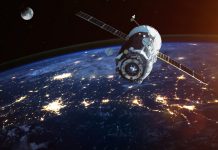NASA is moving forward with Phase 2 of its innovative LunaRecycle Challenge, inviting U.S. based individuals and teams to develop creative solutions for recycling waste materials on the Moon
The LunaRecycle Challenge is part of a bigger effort to support long-term human presence in deep space by addressing waste, which is one of its biggest challenges.
Sustainable space missions
As humanity continues to explore space and the Moon, managing waste in space becomes more critical.
A crew of four astronauts can generate over 2,100 kilograms (about 4,600 pounds) of single-use waste in just one year. This waste includes everyday materials such as plastic films, foam packaging, clothing, and food wrappers. These items are challenging to manage in space where traditional waste disposal systems are not viable.
The LunaRecycle Challenge wants to create a practical recycling system that can repurpose these materials into valuable products, helping to minimise resupply needs and environmental impact during long-term missions.
These systems need to be efficient and safe, while also requiring minimal crew time and resource inputs.
Challenges and timelines
Phase 2 of the LunaRecycle Challenge is organised into two parts: a milestone round and a final round. Submissions for the milestone round are open until January 2026. Up to 20 finalists will be selected in February 2026 to move on to the final phase of the competition, which includes in-person prototype demonstrations and judging scheduled for August 2026.
Participants are required to build a physical prototype of their recycling solution. Teams also have the option to submit a digital twin, a virtual model of their prototype, to complete for extra awards.
Who can participate?
Unlike the global Phase 1 competition, Phase 2 of the LunaRecycle Challenge is only open to U.S. citizens and organisations. However, participation is not limited to those who joined Phase 1. New teams and individuals with innovative recycling concepts are welcome to enter, as long as they can deliver a functional prototype.
The LunaRecycle Challenge offers a total prize pool of $2 million to be distributed across both rounds of the competition. This funding is expected to attract a wide range of participants, from startups and academic institutions to independent inventors and established companies. The ultimate goal is to generate scalable and space-worthy recycling technologies that could be deployed during upcoming lunar missions.
Phase 1 of the LunaRecycle Challenge had record-breaking engagement, with over 1,200 registrations and nearly 200 submissions evaluated by a panel of 50 judges. Seventeen winners were selected from five different countries and nine U.S. states, reflecting the global interest in solving space sustainability challenges.
Phase 2 will focus more on integration and practical deployment. NASA hopes that combining physical prototypes with digital simulations will help identify the most promising technologies for future lunar habitats and operations.
Partnership and management
The LunaRecycle Challenge is managed by NASA’s Marshall Space Flight Center in Alabama, with support from subject matter experts at Kennedy Space Center in Florida and Ames Research Center in California. NASA is partnering with the University of Alabama College of Engineering, former Centennial Challenge winner AI SpaceFactory, and environmental sustainability leader Veolia to guide the competition.











